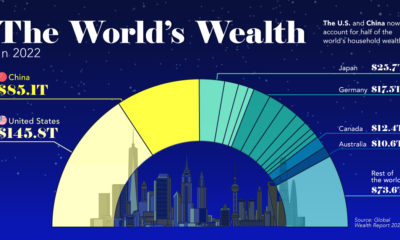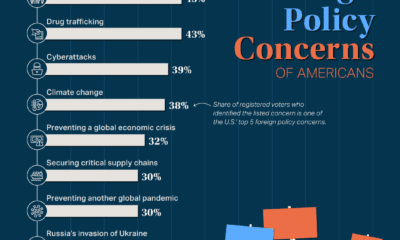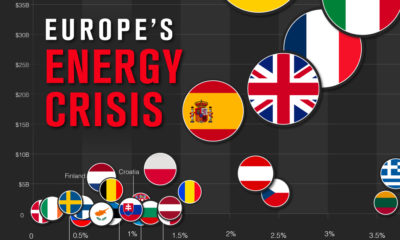In fact, with consumption for both medical and recreational products on the rise, 2020 was a record-breaking year for the industry. After years of investor uncertainty, analysts are predicting a continued bull market in 2021, with several new and exciting developments on the horizon. Here are nine things cannabis investors need to know.
1. Cannabis Stocks on the Rise
While asset prices took a dip during the initial stage of the COVID-19 outbreak in March, the cannabis sector recovered swiftly after reporting impressive numbers. Even though cannabis investors have experienced some ups and downs in the last several years, 2021 looks more hopeful.
2. COVID-19 and Cannabis
Cannabis has become an attractive option for people spending more time at home, both as a means of entertainment, and to reduce stress and anxiety associated with the pandemic. As a result, cannabis sales are soaring. In Canada, monthly sales reached an all-time high of $270 million (CAD) in October 2020, a dramatic increase from $180 million just six months earlier.
3. Cannabis Black Market No More?
For millions of U.S. citizens who live in states where the sale of cannabis is still restricted, the illicit market continues to be their only option. But with loosening restrictions and legal cannabis becoming more widely available, legal sales are predicted to reach $50 billion by 2026 while illegal sales will plummet to less than $1 billion by the same year.
4. Political Change Driving Market Growth
Almost 70% of Americans now support the full legalization of cannabis—the highest figure ever recorded. States where cannabis is legal are now paving the way for cannabis sales, with California expected to pull in over $6 billion by 2021 alone. If federal legalization comes to fruition over the next several years, the already booming U.S. market could see further growth.
5. All Eyes on the European Cannabis Market
The European cannabis market has been on investors’ radar for several years, and with good reason—it is one of the largest cannabis markets in the world. Driven primarily by medicinal products, the market will be valued at over $39 billion by 2024, with countries like Germany—Europe’s largest economy—leading the way. In late 2020, the market experienced its biggest breakthrough yet, with the European Union ruling that products containing CBD (one of the most active ingredients in cannabis) are no longer listed as narcotics.
6. Making History in Mexico
Mexico is another market that is piquing the interest of investors and cannabis companies the world over. That’s because it could soon be the third country in the world to legalize recreational cannabis by court order. With a total addressable market of $2 billion and the potential to support up to 75,000 jobs, these new regulations could change the dynamic of the global market for the better.
7. Most Popular Cannabis Products
Given the flurry of product innovation in the market, consumption of cannabis is quickly changing. Relatively new products such as edibles and oils are gaining traction, while consumption of flower appears to be declining. This could be due in part to oral products being perceived as a healthier alternative to smoking.
8. CBD Products are Moving into the Mainstream
Although CBD was once considered a niche product that could only be found in dispensaries, growing awareness of the benefits and safety of these products are causing companies operating in the consumer packaged goods industry to take notice. The cannabis compound is a new addition to a wide range of products such as skincare, makeup, and supplements that can now be purchased almost anywhere—from ecommerce sites to local grocery stores.
9. The New Cannabinoids on the Block
Beyond CBD, scientists have discovered over 100 rare, or minor cannabinoids such as CBG and CBN, that could have even more significant benefits than their major cannabinoid counterparts. For example, preliminary research shows that CBG could inhibit cancer growth, help treat glaucoma, bladder dysfunction, and kill drug-resistant bacteria. These discoveries are not only attracting huge attention from the cannabis industry, but from the pharmaceutical industry as well.
Milestones in the Making
With all of these exciting developments coming to the fore, it’s safe to say 2021 could be one of the cannabis industry’s most transformative years to date. on Last year, stock and bond returns tumbled after the Federal Reserve hiked interest rates at the fastest speed in 40 years. It was the first time in decades that both asset classes posted negative annual investment returns in tandem. Over four decades, this has happened 2.4% of the time across any 12-month rolling period. To look at how various stock and bond asset allocations have performed over history—and their broader correlations—the above graphic charts their best, worst, and average returns, using data from Vanguard.
How Has Asset Allocation Impacted Returns?
Based on data between 1926 and 2019, the table below looks at the spectrum of market returns of different asset allocations:
We can see that a portfolio made entirely of stocks returned 10.3% on average, the highest across all asset allocations. Of course, this came with wider return variance, hitting an annual low of -43% and a high of 54%.
A traditional 60/40 portfolio—which has lost its luster in recent years as low interest rates have led to lower bond returns—saw an average historical return of 8.8%. As interest rates have climbed in recent years, this may widen its appeal once again as bond returns may rise.
Meanwhile, a 100% bond portfolio averaged 5.3% in annual returns over the period. Bonds typically serve as a hedge against portfolio losses thanks to their typically negative historical correlation to stocks.
A Closer Look at Historical Correlations
To understand how 2022 was an outlier in terms of asset correlations we can look at the graphic below:
The last time stocks and bonds moved together in a negative direction was in 1969. At the time, inflation was accelerating and the Fed was hiking interest rates to cool rising costs. In fact, historically, when inflation surges, stocks and bonds have often moved in similar directions. Underscoring this divergence is real interest rate volatility. When real interest rates are a driving force in the market, as we have seen in the last year, it hurts both stock and bond returns. This is because higher interest rates can reduce the future cash flows of these investments. Adding another layer is the level of risk appetite among investors. When the economic outlook is uncertain and interest rate volatility is high, investors are more likely to take risk off their portfolios and demand higher returns for taking on higher risk. This can push down equity and bond prices. On the other hand, if the economic outlook is positive, investors may be willing to take on more risk, in turn potentially boosting equity prices.
Current Investment Returns in Context
Today, financial markets are seeing sharp swings as the ripple effects of higher interest rates are sinking in. For investors, historical data provides insight on long-term asset allocation trends. Over the last century, cycles of high interest rates have come and gone. Both equity and bond investment returns have been resilient for investors who stay the course.













